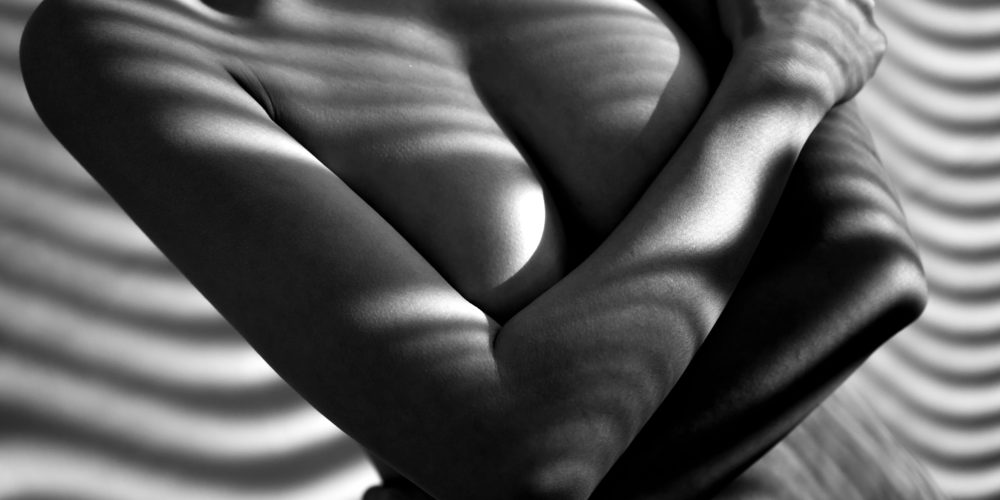- Breast implants come in dozens of different shapes and sizes: some are perky, voluminous and round, while others are more discrete or teardrop-shaped.
- The implant’s height, width, projection and material will also affect your final results.
- A board-certified plastic surgeon can help you choose the type of implant that best suits your frame, body type and expectations.
Thinking about getting breast augmentation surgery? Although it’s important, size isn’t the only factor to consider.
There are literally dozens of different breast implant shapes, from the uber-popular gummy bear implants to classic round implants. And, like cosmetic surgery trends at large, the most popular shapes come and go.
Here is an overview of the terminology used to describe these various options.
Anatomic Implants
Anatomic breast implants are more customizable, meaning they can offer a more natural or distinctive look than basic, round breast implants. Teardrop breast implants are classified as anatomic implants because they closely mimic the look of natural breasts.
Form-Stable Implants
The term “form-stable” in breast enhancement refers to the material with which the implant is made. Form-stable implants, also called gummy bear implants, are typically made of a thicker silicone gel than standard silicone implants. These implants are often preferred by patients who want a more natural look. They are also said to hold shape better, and have a lower rate of rupture than older gel implants.
Gummy Bear
Another name for form-stable implants, gummy bear implants get their name because the thick, silicone gel holds it shape and looks similar to the firm yet forgiving gel of a gummy bear. These natural-looking implants feature a teardrop shape which projects at the bottom and tapers off at the top.
Popular implant manufacturers (Sientra, Allergan, Mentor, and others) offer different gummy bear shapes — for example, Allergan’s Natrelle implants come in 12 shapes — so they’re very customizable.
Implant Height
Round implants are typically a uniform size, while shaped implants come in low, medium, and tall heights. Projection and height, though similar, are not the same. Projection refers to how much the implant protrudes from the chest, whereas height refers to the implant’s placement and upper-half fullness.
Implant Width
Width is another important factor to consider. Oftentimes, your plastic surgeon will help you determine which implant is best for you based on the dimension of your existing, natural breast tissue. If the width of your implant is too different from the width of your natural breast, the results may look unnatural.
Profile and Projection
The terms “profile” and “projection” are often used interchangeably, although they don’t mean exactly the same thing. “Profile” is an expression generally used by implant makers to describe of the overall silhouette of an implant, whereas “projection” is a measurement of its depth.
High-profile implants are narrower with more projection, while low-profile implants are just the opposite: wider with less projection.
Should you have a wider torso, your plastic surgeon may recommend low-profile implants in order to properly fill out the chest. High-profile implants are often recommended for patients who have narrower torsos.
Implant manufacturers also offer moderate-projection implants, and some even carry options such as “moderate plus” and “moderate high,” allowing you to further customize your projection.
Round
By far the most common, round implants appear much fuller and, well, rounder, than form-stable implants.
Unlike form-stable and other anatomical breast implants, round implants are the same shape all over (in other words, you don’t have to worry as much about height and width). Although these implants are considered less natural in appearance, they have an upper hand because they’re less likely to rotate or shift out of place.
Round Moderate
As we’ve already noted, round implants vary less in terms of shape than anatomical ones. However, there is some variation. Round moderate breast implants are popular because they offer the classic, round shape but have a more moderate projection, which makes them look a bit more natural.
Saline
These aren’t as popular as silicone gel implants but are often used when a patient either doesn’t want silicone implants or isn’t old enough to get them (the FDA mandates you must be 22 years old to get silicone implants).
Saline implants use silicone shells that are filled with saline, which is essentially just sterile saltwater. If saline breast implants leak, the body is able to safely absorb the saltwater. However, if ruptured they will deflate.
Shaped
Shaped implants simply refer to any breast implant shape that isn’t round. For example, gummy bear implants are referred to as shaped implants because they have a very distinctive teardrop shape. These implants are often used in breast reconstruction procedures and gender reassignment surgeries by women who prefer a natural shape.
Silicone
By far the most popular variety, in 2016 silicone implants were used in 84 percent of all breast augmentations. These implants are filled with cohesive silicone gel, which is desirable because it won’t collapse should it leak (think “jello” not “jelly”). Silicone implants also feel more natural than saline.
Smooth
Most breast augmentation procedures use smooth implants, meaning they have a smoother surface when compared with textured ones. This allows the implants to move freely, reducing the risk of implant malposition.
Structured Saline
Like standard saline implants, structured saline implants get their volume from sterile saltwater. The only difference is that these implants have an inner structure that gives them a bit more shape.
For example, the Ideal Implant, an FDA-approved structured saline implant, has an inner shell that holds the saline filler, which prevents folding and wrinkling. These implants are also less likely to deflate or rupture over the long-term and feel more like silicone implants than traditional saline implants.
Teardrop
A type of anatomical implant, teardrop implants are just as they sound. They’re shaped like teardrops, which are similar to the shape of some natural breasts.
Teardrop-shaped implants tend to feature more fullness in the lower pole compared to the upper pole. Because they’re usually made with a more cohesive silicone, they are less likely to rupture and leak. Teardrop implants also tend to be more expensive than round ones.
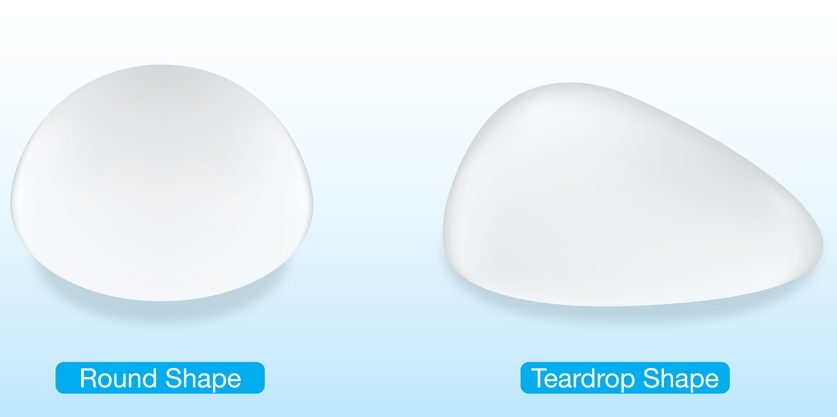
Textured
If you want a long-lasting implant that’s not likely to move around over time, a textured shell implant is a good choice. These implants have a textured surface, which encourages the body to develop scar tissue, effectively sealing them into place. This is thought to lower the risk of capsular contracture, which occurs when the scar tissue around the implant hardens, but it also increases the risk of implant malposition.
Take note, however, that textured implants have recently been associated with ALCL, a rare lymphoma found in a very small number of patients with breast implants. All shaped, anatomic, non-round implants are textured to minimize the risk of implant rotation.
Upper Pole Fullness
This is a term used to describe the shape and volume of the upper part of the breast, usually the portion above the nipple. In other words, it’s what makes the top part of the breasts look voluminous instead of flat.
If upper pole firmness is what you’re after and size and shape aren’t a huge concern, a breast lift might be a better option for you than implants. The term “lower pole fullness” is also used to describe the fullness below the nipple.
Which Shape Is Best for You?
At the end of the day it’s really your surgeon’s job to choose the appropriate implant. While you can and absolutely should provide information on the final result you desire, determining the size and shape of your implant is a true science that only a good board-certified plastic surgeon can make. He or she will be able to help you find an implant that complements your body type and meets all of your expectations.
Surgical Bras for Breast Implant Recovery: Top Products
No matter the shape of the implants that you ultimately choose, breast implant recovery requires a good post surgical bra. Also known as a compression bra, this recovery tool helps to ensure optimal results and minimize scarring. The following are among the best compression bras available.
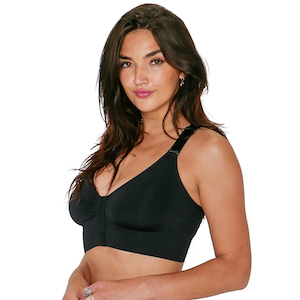
RxBra
RxBra provides a high quality post surgical bra that, unlike other bulkier medical bras, lets you recover in style. The bras’ padded backing gives it the comfort that you need when recovering, and its front clasp makes it easy to get on and off if your movements are restricted. Above all, RxBra lets you feel good about how you look — even immediately after surgery — while providing the support and comfort that you need.
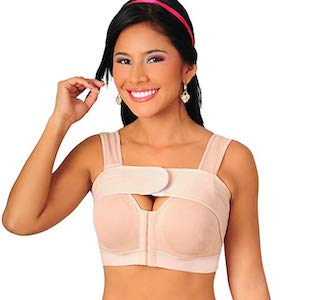
Faja Salome Post-Surgical Breast Band
This bra uses hypoallergenic fabric to reduce irritation during the healing process. A velcro band across the top of the breasts holds the bra in position and prevents unnecessary breast movement. Also known as the Colombian Shaper, this bra has a unique sizing system that must be taken into account before placing an order.
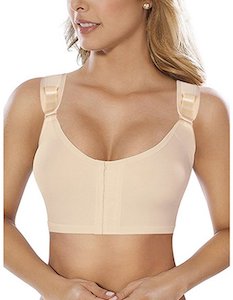
Burvogue Women Post-Surgery Front Closure Brassiere Sports Bra
The Burvogue post surgery bra has no cup pads, providing an added level of comfort during recovery. Its six front clasps are adjustable, with three different sizes to best fit your needs. This compression bra is made of 90% polyester, 5% cotton, and 5% elastan.
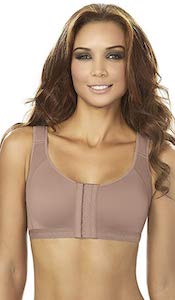
Ann Chery Post Surgery Bra
Ann Chery’s compression bra uses seven front clasps that can be adjusted to two different sizes. Its full back design and large straps provide an added layer of support, while its adjustable straps help to better fit each wearer.






